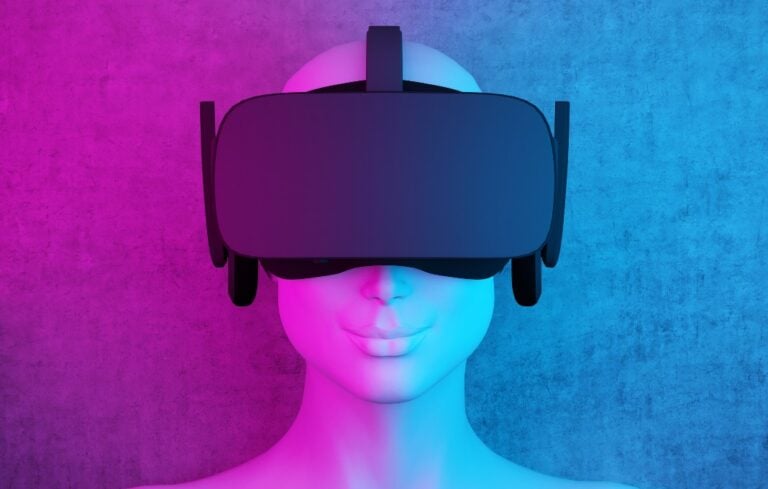
 “You have capacities within you that are phenomenal, if you only knew how to release them.” – David Bohm, American theoretical physicist renowned for his interpretation of quantum mechanics
“You have capacities within you that are phenomenal, if you only knew how to release them.” – David Bohm, American theoretical physicist renowned for his interpretation of quantum mechanicsDiversity is innovative potential.
To activate this potential, leaders must understand the underlying process through which diversity leads to innovation. One early requirement is to loosen traditional views of leadership based in command and control. This creates mental space to consider an organization as an ecology of innovation. An ecology is a system of difference. Innovation emerges as people with diverse thinking interact with each other in an accommodating environment.
This reframed view of leadership starts you on the path to realizing the innovative potential and adaptability that is embedded in your organization today.
Leaders support innovation by setting the conditions for innovation to emerge. Innovative potential applies equally to new ideas for products and services, business processes, organization design, or any other type of useful innovation. Broadly speaking, the factors that influence a system’s ability to generate emergent innovation can be understood through a framework comprised of container, diversity, and exchange, referred to in some circles as the CDE model.
Creating real, face-to-face dialogue in your organization is a critical leadership objective if you are to realize the potential of diversity. Dialogue is the ability to think together in ways that allow differences to emerge in service of common interests. This creates the potential for ideas, perspectives, and experiences to combine in ways that can lead to new awareness and experimentation. This newness can be small, incremental change or it can be a strike-of-the-eye realization that leads to discontinuous, transformative change in products, markets, or strategic capability.
An important enabler of effective dialogue is shifting habitual thinking and ways of interacting. Most of us have become highly skilled at a phrase called “thinking alone”, a term coined in Dialogue: The Art of Thinking Together, written by William Isaac, one of the founders of MIT’s Organizational Learning Center.
These thinking flaws take several forms: fragmentation and losing awareness of the whole; rigidly holding onto one’s views; and imposing one’s views onto others. These patterns suppress the innovative possibility of dialogue. Until we’re able to create psychologically safe space to share our reality, we’re working in a state of fragmentation and under-leveraging the potential of diversity.
We can experience an application of container, diversity, and exchange (i.e., dialogue) by looking at a process for organization design. The design journey is viewable as a series of conversations focused broadly on the vision of a new organization and narrowly on specific design issues. These conversations are frequently conducted in workshops. They are understandable as containers that hold members together to explore important aspects of today’s current state and tomorrow’s possibility.
Inside these containers we place diversity. The wisdom needed when creating a new organization design is distributed throughout the system. Seeing the whole system and thinking in whole-system terms requires the use of a microcosm. It represents all the voices in the system from central leadership to the edges of the organization and, at times, beyond the edges to key external stakeholders. This microcosm represents a diversity of voices, perspectives, and knowledge about the organization and its operating environment.
The exchange that must occur among the diverse members of an organization is based strongly in dialogue. Facilitation must support the flow of meaning and break down common patterns of fragmented thinking, rigidity of thought, and the imposition of viewpoints. Regarding the latter point, it is common to prepare leadership by collaboratively thinking through their involvement and how their behavior will support or inhibit effective exchange. The process can only work when each participant feels unencumbered to speak their truth.
The belief that there are politically “right” and “wrong” comments will disempower diverse thinking.
Diversity is the source of innovation that organizations require to survive.
Leaders are well served to understand the ecology metaphor and apply it in their organizations. You cannot command discovery. Instead, ecology emphasizes interaction as the means to invite diversity into creative discovery. Setting the conditions for an ecology of innovation is not a quick solution. You can, however, begin to shape your understanding and awareness.
Start by looking at your management team: how does it meet; what are its sources of diversity; what is the quality of the dialogue and exchange? This exercise will begin to shape your thinking about the factors that unlock the innovative possibility of diversity in your broader organization.
Carlo Levi, Italian political activist during Mussolini’s dictatorship said, “The future has an ancient heart.” The ideas in this article are based in complexity science informed by the adaptability of natural ecologies that have been evolving over millennia. This perspective views the interactions that occur across an organization, or in a workshop, as a primary concern of leadership. The true catalyst of innovation is the web of relationships between people who do not think alike. This places diversity in the center of the conversation about innovation. Activating the potential of diversity is the responsibility of leadership at all levels of an organization.
Related: A Powerful New Way of Thinking to Lead the Charge for Disruption




Chief Executive Group exists to improve the performance of U.S. CEOs, senior executives and public-company directors, helping you grow your companies, build your communities and strengthen society. Learn more at chiefexecutivegroup.com.
0

1:00 - 5:00 pm
Over 70% of Executives Surveyed Agree: Many Strategic Planning Efforts Lack Systematic Approach Tips for Enhancing Your Strategic Planning Process
Executives expressed frustration with their current strategic planning process. Issues include:
Steve Rutan and Denise Harrison have put together an afternoon workshop that will provide the tools you need to address these concerns. They have worked with hundreds of executives to develop a systematic approach that will enable your team to make better decisions during strategic planning. Steve and Denise will walk you through exercises for prioritizing your lists and steps that will reset and reinvigorate your process. This will be a hands-on workshop that will enable you to think about your business as you use the tools that are being presented. If you are ready for a Strategic Planning tune-up, select this workshop in your registration form. The additional fee of $695 will be added to your total.

2:00 - 5:00 pm
Female leaders face the same issues all leaders do, but they often face additional challenges too. In this peer session, we will facilitate a discussion of best practices and how to overcome common barriers to help women leaders be more effective within and outside their organizations.
Limited space available.

10:30 - 5:00 pm
General’s Retreat at Hermitage Golf Course
Sponsored by UBS
General’s Retreat, built in 1986 with architect Gary Roger Baird, has been voted the “Best Golf Course in Nashville” and is a “must play” when visiting the Nashville, Tennessee area. With the beautiful setting along the Cumberland River, golfers of all capabilities will thoroughly enjoy the golf, scenery and hospitality.
The golf outing fee includes transportation to and from the hotel, greens/cart fees, use of practice facilities, and boxed lunch. The bus will leave the hotel at 10:30 am for a noon shotgun start and return to the hotel after the cocktail reception following the completion of the round.